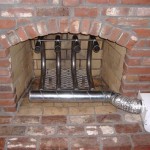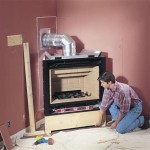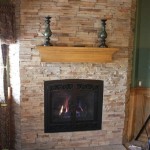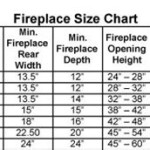How to Fix a Leaky Fireplace Gas Valve
A leaky gas valve in a fireplace presents a significant safety hazard. Natural gas or propane leaks, if unattended, can lead to fire or explosion, and exposure can pose serious health risks. Therefore, promptly addressing a leaky valve is crucial. This article provides a comprehensive guide to diagnosing and rectifying a leaky fireplace gas valve. It is important to emphasize that gas-related repairs are inherently dangerous and should ideally be performed by a qualified and licensed gas appliance technician. Attempting these repairs without the necessary experience and expertise carries substantial risk.
Before undertaking any inspection or repair, the primary safety precaution is to shut off the gas supply to the fireplace. Locate the main gas shut-off valve, typically situated near the gas meter, and turn it to the "off" position. Once the gas supply is secured, ensure the area is well-ventilated by opening windows and doors. Avoid any activities that could create sparks or flames, such as smoking or using electronic devices near the fireplace.
Identifying the Leak Source
The first step in addressing a leaky gas valve is to accurately identify the source of the leak. Several potential locations can contribute to gas leakage, including the valve body, the gas line connections, and the valve stem. Determining the precise location is essential for implementing the appropriate repair strategy.
A common method for detecting gas leaks is the "soap bubble test." This involves mixing a solution of dish soap and water and applying it to the suspected leak areas. The soap solution will create bubbles at the point where gas is escaping. Apply the solution liberally to all joints and connections surrounding the gas valve, carefully observing for any bubble formation. Areas to focus on include where the gas line connects to the valve, where the valve body is joined, and around the valve stem itself.
Another method involves using an electronic gas leak detector. These devices are designed to sense the presence of natural gas or propane and provide an audible or visual alarm. While soap bubble tests are a reliable option, an electronic detector can identify minor leaks that may not be readily apparent through visual inspection. Ensure the gas leak detector is calibrated and functioning correctly before use. Follow the manufacturer's instructions for proper operation and interpretation of readings.
If the leak appears to be originating from the valve stem, it may be due to a worn or damaged packing nut. The packing nut is a component that creates a seal around the valve stem, preventing gas from escaping. Over time, the packing material can dry out, crack, or become loose, resulting in a leak. In this case, tightening the packing nut may temporarily resolve the issue, but a more permanent solution may require replacing the packing material or the entire valve.
Leaks emanating from the gas line connections could be caused by loose fittings, corroded pipes, or damaged threads. Inspect the connections carefully for any signs of damage or corrosion. Tightening the connections with appropriate wrenches may solve the problem, but it is crucial to avoid over-tightening, as this can further damage the fittings. If corrosion is present, the affected pipe section may need to be replaced entirely.
If the leak seems to be coming from the valve body itself, there is likely an internal malfunction within the valve assembly. Cracks, corrosion, or deterioration of internal components can lead to gas leakage. In most cases, a leaky valve body necessitates replacing the entire gas valve, as internal repairs are often complex and unreliable.
Repairing or Replacing the Gas Valve
Once the source of the leak has been identified, the appropriate repair or replacement procedure can be initiated. As mentioned earlier, working with gas requires specialized knowledge and caution. If there is any uncertainty about the repair process or potential risks, consulting a qualified gas appliance technician is strongly recommended.
For leaks originating from loose fittings, carefully tighten the connections using two wrenches. One wrench should be used to hold the gas valve body steady, while the other wrench is used to tighten the fitting. This prevents unnecessary stress on the valve and gas line. Ensure that the fitting is tightened securely, but avoid excessive force that could damage the threads or the valve body. After tightening the fitting, re-apply the soap bubble test to confirm that the leak has been eliminated.
If the leak is emanating from a corroded pipe section, replacement is necessary. Shut off the gas supply to the fireplace and disconnect the affected pipe section. Clean the threads on the remaining pipes thoroughly and apply a gas-rated pipe sealant to the threads before connecting the new pipe section. Ensure the new pipe section is of the correct size and material to maintain the integrity of the gas line.
Addressing a leaky valve stem often involves replacing the packing material or tightening the packing nut. First, slightly loosen the packing nut. Then, use a specialized tool to remove the old packing material. Insert new packing material of the appropriate size and type, following the manufacturer's recommendations. Finally, tighten the packing nut until it creates a snug seal around the valve stem. Avoid over-tightening, as this can restrict the valve's movement. After completing the repair, apply the soap bubble test to confirm the leak has been fixed.
Replacing the entire gas valve is a more complex undertaking. Begin by shutting off the gas supply to the fireplace and disconnecting the gas line from the valve. Carefully disconnect any electrical wiring connected to the valve, taking note of their original positions. Unscrew the valve from its mounting bracket and remove it from the fireplace. Install the new gas valve in the reverse order, ensuring that all connections are secure and that the electrical wiring is correctly reconnected. Apply gas-rated pipe sealant to the threads before connecting the gas line to the new valve.
Testing and Verification
After completing any repair or replacement work, it is essential to thoroughly test and verify that the leak has been completely resolved and that the fireplace is functioning safely and correctly. This involves a series of checks and inspections to ensure the integrity of the gas connections and the proper operation of the fireplace components.
Re-apply the soap bubble test to all connections and fittings to ensure that no gas is escaping. Pay close attention to the areas where repairs were performed, as well as any previously undetected leak locations. If any bubbles are observed, repeat the repair process until the leak is eliminated. Using an electronic gas leak detector to verify the absence of residual gas leakage is also a good strategy.
Turn the gas supply back on slowly, and monitor the pressure gauge for any fluctuations that indicate a potential leak. Check the fireplace burner to ensure that it ignites smoothly and consistently. Observe the flame pattern to ensure that it is burning cleanly and efficiently, without any unusual flickering or soot formation. If any irregularities are noted, consult a qualified gas appliance technician for further evaluation.
Verify that all safety features of the fireplace, such as the pilot light and safety shutoff valve, are functioning correctly. The pilot light should ignite and remain lit consistently. The safety shutoff valve should automatically shut off the gas supply if the pilot light is extinguished. Test the safety shutoff valve by manually extinguishing the pilot light and verifying that the gas flow is immediately terminated.
Following these steps carefully is essential for ensuring the safety and functionality of the fireplace. Because of the inherent risks associated with gas-related repairs, it is strongly recommended that all work be performed by a qualified and licensed gas appliance technician. This ensures that the repairs are completed correctly and safely, minimizing the risk of future problems.

Fireplace Gas Valve Leaking Here S How To Test It

Fireplace Gas Valve Leaking Here S How To Test It

Fireplace Gas Valve Leaking Here S How To Test It

Gas Valve Check Does My Quarter Turn Ball Need Replaced

Replacing A Gas Ball Valve To Your Fireplace

Fireplace Gas Valve Leaking Found By Dallas Home Inspector Greg House

Replacing A Gas Ball Valve To Your Fireplace

Fireplace Gas Valve Leaking Here S How To Test It

Gas Valve Check Does My Quarter Turn Ball Need Replaced

How To Install A Decorative Key Valve And Trim Ring








